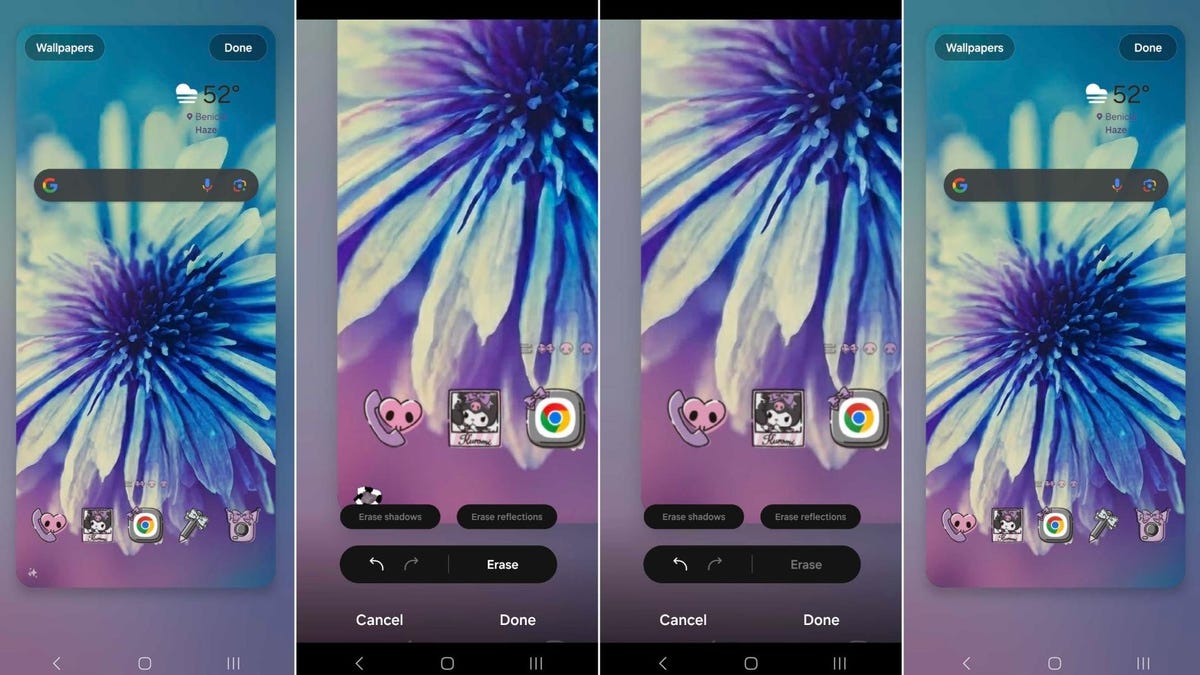The new Samsung Galaxy S24 is all in on AI, so much so that the phone maker made a big deal about how its new AI watermark is meant to dissuade users from spreading AI-altered or purely faked images online. The problem is that the S24 boasts so many AI capabilities that a simple Magic Eraser-like tool can remove that same watermark with little fuss.
At its Galaxy Unpacked event last Wednesday, Samsung declared that any image that used the company’s generative capabilities came with a watermark. This appears in the bottom left side of each picture as the Samsung “sparkle” logo.
Gizmodo confirmed that Samsung’s own AI-based object erase tool—the advertised feature that can eliminate and replace unwanted parts of a photo—can remove the watermark that is supposed to mark if an image was AI-generated. This worked on the Galaxy S24 Ultra test model, and a few others have also noted the pretty big oversight meant to quash fake images from making the internet even more inhospitable than it already is.
But it gets even more confusing. In Gizmodo’s tests, some images where we used the object erase tool did not show up with a watermark, while others, including an AI-modified wallpaper, did. In Samsung’s re-release recording of its Unpacked conference, the watermark appears once Mr. Beast uses the object erase tool to get rid of his crane from his giant (awful tasting) chocolate bar. In text found at the bottom of that same clip, Samsung made it explicit that it’s not taking the blame for any inaccurate deepfake.
“Generative Edit requires a network connection and Samsung Account login. Editing with Generative Edit results in a resized photo up to 12MP. A visible watermark is overlaid on the image output upon saving in order to indicate that the image is generated by AI. The accuracy and reliability of the generated output is not guaranteed.”
Samsung did not immediately respond to Gizmodo’s request for comment if it’s aware of these issues and if it’s working on a fix. The object erase tool, just like Google’s Magic Eraser before it, replaces the pixels of unwanted objects in an image to blend it in with the background. Why the system doesn’t merely replace the same watermark in the new image remains unclear.
Big AI companies like Adobe and even the White House have promoted watermarking as a way to deal with the influx of AI deepfakes online. These watermarks, including Samsung’s, also introduce metadata into each image, notifying the picture was modified. However, editing an image’s metadata with just a little know-how is very easy. Images uploaded to apps like Instagram won’t show any metadata to users flipping mindlessly through their grams.
Then again, AI has long proven itself capable of removing watermarks. If Samsung fixes the issue and makes watermarks more watertight, that won’t stop users from taking the same photo into any other similar apps to remove it. Google’s DeepMind has previously declared it has a way of installing a more permanent watermark inside the very pixels of an image. DeepMind has offered no insight into how this works or what tools folks could use to identify these altered images, but the company did mention the feature would only work on pics modified with Google’s own tools.
For the rest of us, we’ll have to make do with half measures.

